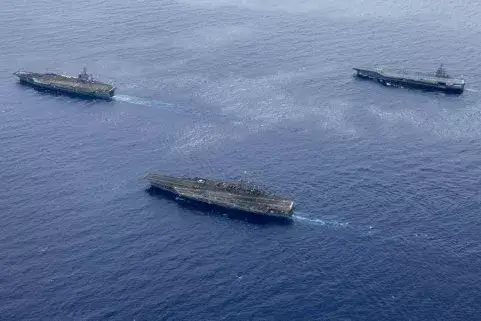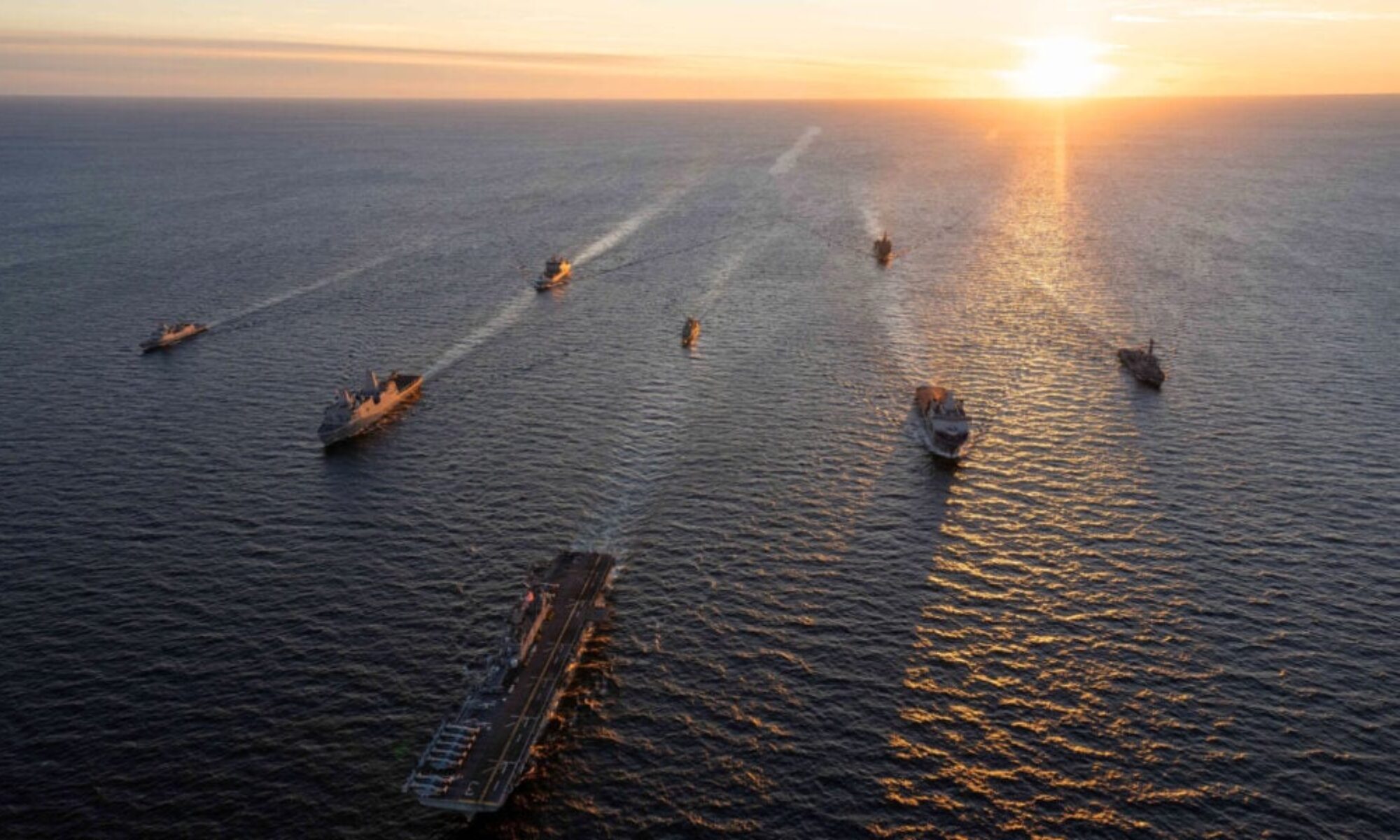

As the founder of Americans for a Stronger Navy, I’ve spent the past year and a half advocating for a robust and capable naval force including the need for improving the production of both U.S. Navy and a civilian maritime fleet.
What I want Americans to understand
Today, I find myself concerned about the current state of our carrier fleet. The strategic deployment of our aircraft carriers is not just a matter of logistics; it’s a critical component of our national security and global stability. As we face mounting challenges in multiple theaters, the strain on our naval resources incuding our sailors is becoming increasingly evident.
In this post, I’ll delve into the complexities of our carrier deployments, the implications of our current strategy, and why it’s more important than ever for America to understand and support our Navy. As always, my goal is to provide you with clear, objective insights that cut through the noise and get to the heart of why these issues matter.
As the U.S. Navy grapples with multiple global hotspots, a critical shortfall of aircraft carriers in the Pacific region has emerged, raising concerns about America’s ability to maintain a strong deterrent presence in an increasingly contested Indo-Pacific theater.
Current Carrier Deployments
The recent redeployment of the USS Abraham Lincoln (CVN 72) from the 7th Fleet to the 5th Fleet, as well as the extension of USS Theodore Roosevelt’s (CVN 71) deployment in the Middle East, has left the Pacific without a U.S. aircraft carrier for the first time in years. This gap comes at a time when tensions in the South China Sea and around Taiwan continue to simmer, with China’s aggressive actions frequently testing the resolve of the U.S. and its allies in the region.
The shift of the USS Ronald Reagan (CVN 76) from Yokosuka, Japan, to Bremerton, Washington, for maintenance, combined with the ongoing readiness activities of other Pacific-based carriers, underscores the strain on the Navy’s resources. The USS George Washington (CVN 73) is expected to fill the gap, but it will not be fully operational in the region for several weeks.
Meanwhile, the U.S. Navy has had to refocus its carrier strength on the Middle East, where increasing instability has necessitated a robust American presence. The USS Abraham Lincoln and USS Theodore Roosevelt, both now in the Gulf of Oman, are tasked with ensuring the safety of critical shipping lanes and deterring further escalation in the region.
Strategic Challenges and Implications
More than half of the U.S. Navy’s 11 aircraft carriers—the largest fleet in the world—were underway over the weekend, demonstrating the immense pressure the Navy faces in managing multiple global fronts. A recent “multi-carrier formation” transiting the Atlantic Ocean, including the USS Dwight D. Eisenhower (CVN 69), USS Harry S. Truman (CVN 75), and USS Gerald R. Ford (CVN 78), further highlights the operational demands placed on the fleet.
The Eisenhower and Truman are returning from historic deployments in the Middle East, where they engaged in combat operations against Iran-backed Houthi rebels in the Red Sea. These missions saw the carriers’ strike groups launch hundreds of missiles in defense and offensive operations, underlining the critical role carriers play in power projection and regional stability.
The Gerald R. Ford, the Navy’s newest and largest carrier, is currently undergoing readiness activities in the Atlantic, which includes essential certifications and ammunition on-loads as part of the Navy’s optimized fleet response plan. This plan is crucial for maintaining the readiness and capability of the fleet to respond swiftly to global events.
However, the absence of carriers in the Pacific raises strategic concerns, particularly as China continues to assert its influence in the South China Sea and beyond. The recent incident involving a Chinese Coast Guard vessel and a Philippine ship highlights the ongoing risk of conflict in this vital region.
Additionally, the Navy’s ability to respond to potential crises in East Asia may be compromised if the current situation persists. While amphibious assault ships, destroyers, and submarines provide important capabilities, they cannot fully substitute the power projection and flexibility offered by an aircraft carrier. As noted by analysts, the Navy will struggle to find like-for-like substitutes for aircraft carriers, especially in terms of the unique posture and capabilities they afford.
The Way Forward
As the Navy continues to navigate these complex global dynamics, it is essential for policymakers to consider the implications of the current carrier deployment strategy. Balancing the need for presence in the Indo-Pacific with the demands of other theaters will require careful planning and, potentially, increased investment in the fleet to ensure that America’s naval forces remain ready to meet the challenges of a rapidly changing world.
The coming weeks will be critical as the USS George Washington transitions to its new role in the Pacific. Until then, the Navy must rely on other assets and diplomatic efforts to maintain stability in this strategically vital region.

